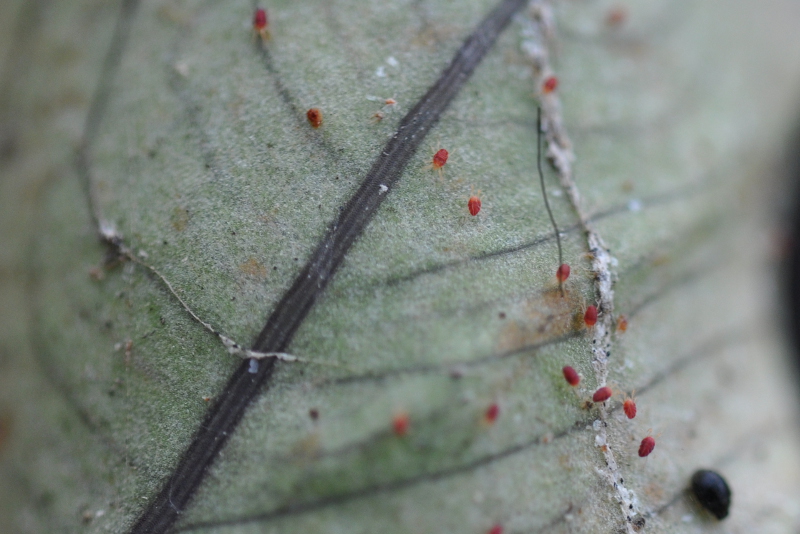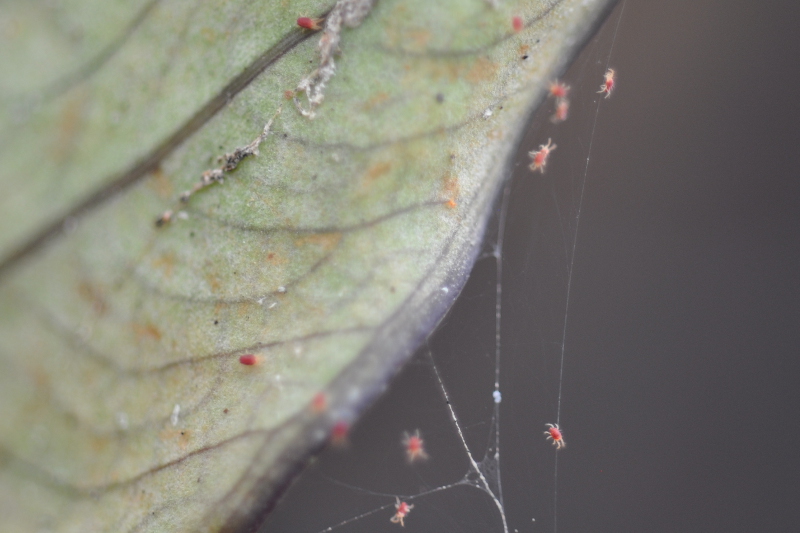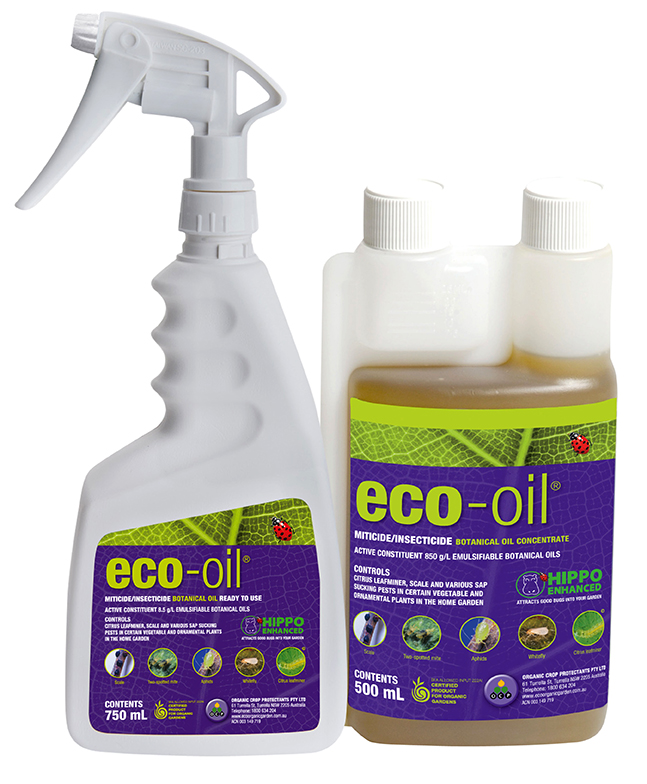Two-spotted mites / spider mites
Two spotted mites and bean spider mites can quickly suck the vigour out of plants and turn them into very drab and sickly looking specimens. The two-spotted mites feed on the chlorophyll in the leaves, leaving the leaves looking pale with white blemishes or mottling all over. Heavy infestations can remove much of the chlorophyll form the leaves, causing them to turn yellow and die.
Apart from the discolouration of the leaves, close examination of plants infested with mites may reveal fine, silken threads over the foliage and between leaves and stems. These silken threads are produced by the mites as they move across the leaf surface. Severely infested host plants usually have a fine cobweb appearance on the leaves, particularly on the underside where this species is most abundant.

Adult two-spotted mites turn red in colour

Fine webbing can often be found on the underside of the leaves
When the mites are young, they have a pale, almost translucent colour with two dark spots on their backs. When they become mature, they turn a darker red colour. This is what often gives them the name 'Red Spider Mites'.
These mites breed quickly in hot dry weather, which is why they often tend to be a problem in enclosed greenhouses and glasshouses. Problems with mites in outdoor garden situations is not frequent, as there will be a balance between the two-spotted mites and natural predators.
Biological control
Control of the two-spotted mites is not all that difficult. Biological control is definitely a great option. Persimilus is a predatory mite that has been commercially available in Australia for over 25 years. Once the Persimilus mites are released into a two-spotted mite infestation, they will quickly feed on the two-spotted mites. Even though persimilis are only slightly larger than the mites on which they feed, an adult can destroy twenty young or seven adult two-spotted mites per day. At a temperature of 25°C, the predatory mites multiply twice as fast as their prey. Persimilus can be bought from commercial suppliers such as Bugs For Bugs.
Organic chemical control

Eco-Oil is an organic insecticide and miticide. The oil effectively smothers the mites, rather than killing them through toxic chemicals. Eco Oil should be applied weekly if pest pressure is high. Since Eco-Oil is not a chemical insecticide, there is no risk of mites developing resistance to the treatment. Eco-Oil is made in Australia from Australian grown plant oils.
